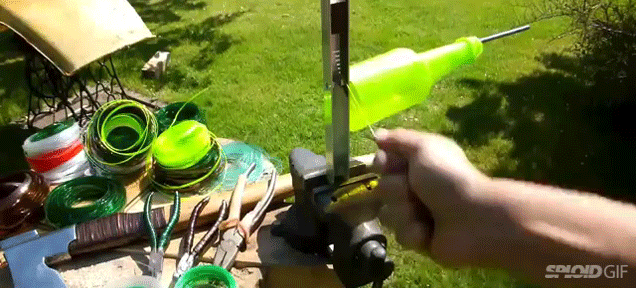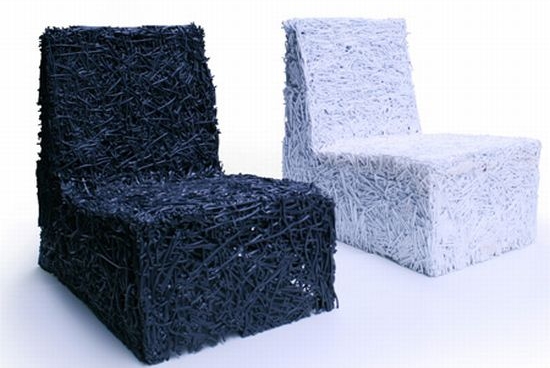Moving towards a new direction:
Premise:
(extraction from http://intercongreen.com/2010/02/17/recycling-vs-upcycling-what-is-the-difference/)
[Over the last decade the term “Upcycling” has been coined and worked into the discourse of sustainability efforts. It appeared in William McDonough’s book, Cradle to Cradle. It has yet to earn itself mainstream popularity, but its necessity as a goal for how we should be progressing makes its definition important. Like so many things in sustainability, I come across many enthusiasts who are trying to promote the practice but may be passing around an incorrect meaning.
We all know what the basis of Recycling is: a practice that takes an item and targets it for reuse, returning it back to the cycle of daily contribution to society rather than discarding it to trash. Going to the dictionary for confirmation renders the following:
- to treat or process (used or waste materials) so as to make suitable for reuse: recycling paper to save trees
- to alter or adapt for new use without changing the essential form or nature of: The old factory is being recycled as a theater
- to use again in the original form or with minimal alteration: The governor recycled some speeches from his early days
- to cause to pass through a cycle again: to recycle laundry through a washing machine
Upcycling is described by some as reusing a material without degrading the quality and composition of the material for its next use. When plastic bottles are recycled, for instance, most often they cannot be turned back into containers associated with anything that can be ingested due to the risk of things seeping into the plastic. As a result, these usually become carpets, or toys, or winter fleeces: things that will eventually also become trash. Recycling has simply prolonged the inevitable by stretching out our waste stream and made the lifecycle costs of the material a bit less.]
Drawing inspiration from the previous direction taken:
1) The idea of breaking used plastics into a type of easily usable and shaped “building raw material” to encourage people to reuse them to make things
2) The design of a modular system of parts that allows various creative configurations to allow variation to reduce wastage.
3) An open source system and collated manual of potential designs based of the modular parts. E.g using A + B = AB / BA
Focusing on the upcycing of plastic bottles though systematically breaking up a plastic bottle into several fixed modules via simple “DIY bottle cutting/shaping kits” which allow the user to order a kit and begin “cutting up” bottles into these modules which in turn can be used to make objects ( a manual similar to the idea proposed by Enzo mari in Autoprogettazione of possible configurations are included as well to inspire). This breaking up of the bottle into usable modules will make the upcycling or bottles much more efficient, less tedious/safe to cut and work with, potentially looking a lot more polished with useful designs instead of craft looking projects.
Inspirational project concept:
From this project, the idea of a smaller scale home plastic cutting/manipulation kit was extracted from, but instead of it being a scaled industrial process (with a shredder, extruder, injection molder etc) which involves the melting of the plastic parts, my take on the process would be the extraction of reusable parts from the plastic bottles and based off the technicalities of the parts, create designs best suited for them) creating a slightly “industrialized” approach to home DIY plastic projects for greater efficiency (less time and effort spent on cutting the bottles more time for making the items), and variation, hence encourages people to engage in them as well.
Why the plastic bottle?
-A main component to plastic pollution and it is so ubiquitous and millions of them are produced every day.
-Bottles are usually contaminated by food particles, hence making it less efficient for recycling as well, although it is still better to recycle them rather than to throw them away in a landfill.
-Bottles come in rather regular sizes and designs, hence making them easier to split into various segments based off their strengths/shape etc
e.g various components based off the form.
Part 2 is most suitable for plastic thread extraction, perhaps part 1 and 3 will require other methods of manipulation, but in essence, it becomes a “module”

Technical explorations:
-Plastic welding using simple heating tools—Heat guns, glue guns
-A simple penknife plastic shredding device (see inspirational examples A and B)
-A simple plastic “spinning/molding” device (see inspirational example C)
-Study of various configurations/what are the most effective ways to separate the bottle into modules
-Study of potential designs derived from the type of module and ways to combine the modules with other easily sourced materials such as concrete/clay/lighting sets etc. (see inspirational examples D)
Technical inspirations:
Example A –Drawing strings/rope from the main body of plastics to collect materials for possibly weaving projects
http://oss.adm.ntu.edu.sg/jye3/technical-inspirations-diy-drawing-plastic-wires-from-bottles/

Example B-Examples of self-drawn plastic strings for weaving projects. This method allows the variation of “threads” of different thicknesses for various usage.
http://www.youtube.com/watch?v=44Opdzeq4oc

http://www.floriesalnot.com/PlasticGoldPart1.html

They could potentially be woven into various patterns and heated over a mold( ?)
Example C-where a simple spinning device mounts the plastic object and using a heat gun, the plastic can be molded into different vessels similar to that of a potter’s wheel. Possibly a home scaled plastic molding device based off the principals of a potter’s wheel + controlled heat source.

http://youtu.be/EMY8i00LkiE?t=1m50s
Examples D- potential methods to combine plastics with concrete etc to look at

http://www.instructables.com/id/DIY-Light-Transmitting-Concrete-Video/

http://homemade-modern.com/ep09-concrete-pendant-lamp/


With a combination of bottles, concrete and lighting units
Autoprogettzione component:
-To look at various designs which can be made with ease from the extracted plastic modules and come up with a manual of various designs which people can follow to make. Places to source for materials etc.
E.g it will also inform them for larger items, e.g a weaved chair– it will require e.g 50 bottles or 100 bottles to achieve.
Links to upcycing websites:
http://www.trunity.net/upcycling/view/blog/51cbeb6b7896bb431f6887f8/?topic=51cbfc57f702fc2ba8123568
http://www.upcyclethat.com/
http://www.heathnash.com/others.php

